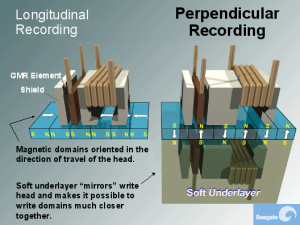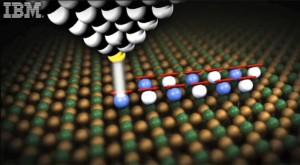
Well as many of you know, just earlier today or yesterday, Seagate announced a break through in storage capacity, a whopping 6TB hard drive will be available in the next few years. However, do you really need such large hard drive? Yes and No. Yes, if you run a storage server, such movies and sharing files, like cloud computing cluster server then yes. No, if you’re just doing research and email online, in fact storing data on your hard drive computer is not safe, hacker gets in and you’re expose to the internet all your information published public, and if the computer hard drive crashed, there goes all your research and data information. I have a laptop that have 10GB hard drive and working fine for me, I depend and rely on media storage rather than hard drive, not even HDD. Anyhow a while back IBM also announced unlimited space storage through laser technology I don’t know how that work, but IBM is one of the world computer and storage manufacturer doing continuous research and developments.
Are you always running out of hard drive space on your laptop or desktop? Those issues could potentially be a thing of the past thanks to a breakthrough that Seagate announced yesterday. The hard drive maker announced that it was the first to hit a storage density of 1 terabit (or 1 trillion bits) per square inch. This extraordinary feat means that the company expects storage of today’s hard drives could easily double with its introduction later this decade, with the hardware of these drives featuring up to 60 terabytes in the ten years afterwards. Seagate tried to put the milestone in perspective by stating that the number of bits per square inch vastly outnumbers the stars in the Milky Way, which are somewhere between 200 billion and 400 billion.
This new benchmark was due to heat-assisted magnetic recording (HAMR), which is the successor to today’s Perpendicular Magnetic Recording (PMR) on spinning platters in hard drives. While current PMR enabled 3.5 inch hard drives to top out at 3TB and 2.5 inch drives to cap at 750GB, the first generation of HAMR drives, which operate with an additional laser on the hard drive head to write data to the drive, are expected to double this space. That means that users should see desktop drives coming in around 6TB for the 3.5 inch version and laptops with 2TB for the 2.5 inch drives. Seagate expects the theoretical density limit for HAMR drives would be somewhere in the range of 5 to 10 terabits per square inch, which would equate between 30-60TB for the 3.5 inch drive and 10-20TB for the 2.5 inch drive.
According to Mark Re, senior vice president of Heads and Media Research and Development at Seagate, the media and data driven world that we live in will benefit significantly from these advances. “The growth of social media, search engines, cloud computing, rich media and other data-hungry applications continues to stoke demand for ever greater storage capacity. Hard disk drive innovations like HAMR will be a key enabler of the development of even more data-intense applications in the future, extending the ways businesses and consumers worldwide use, manage and store digital content.”
